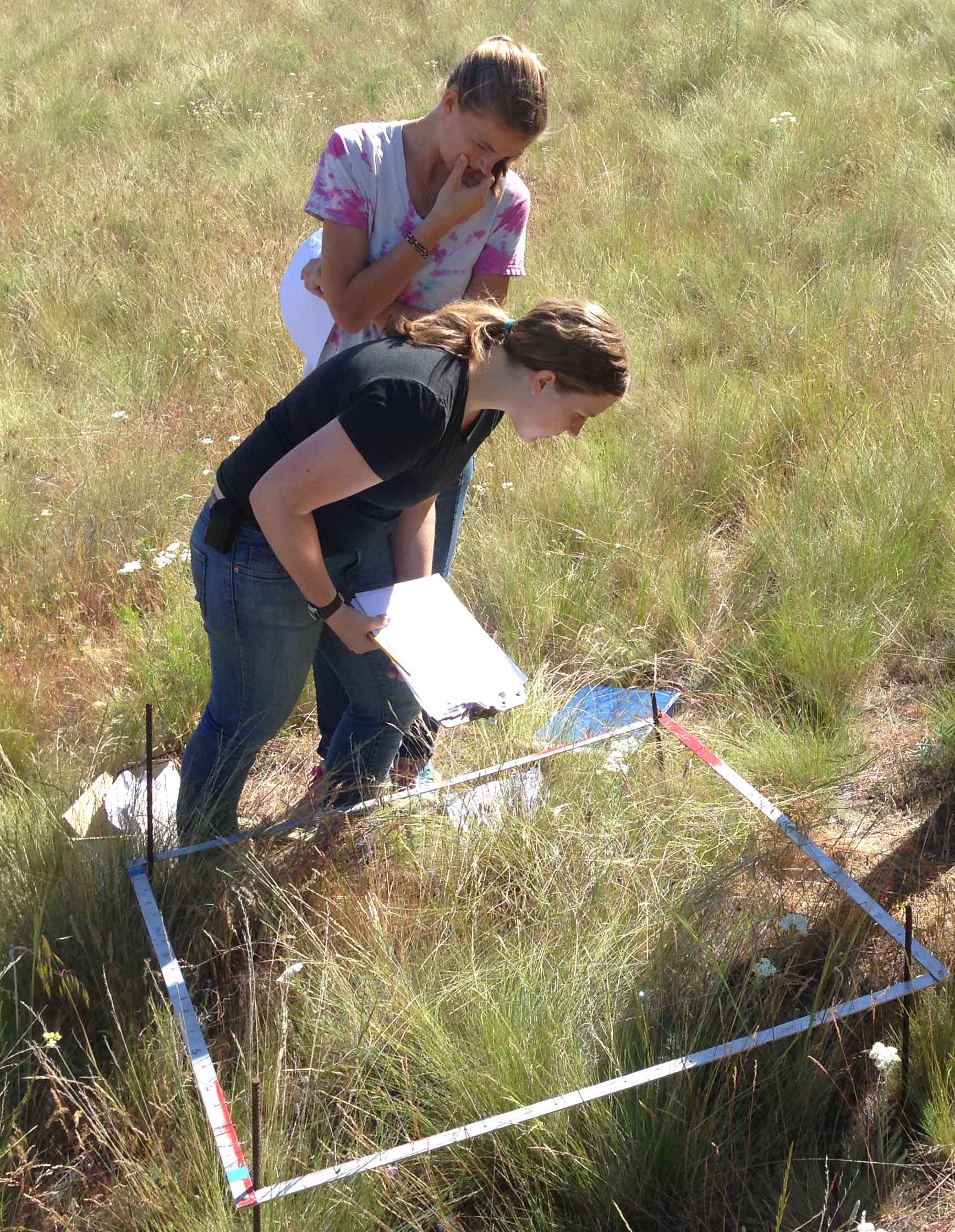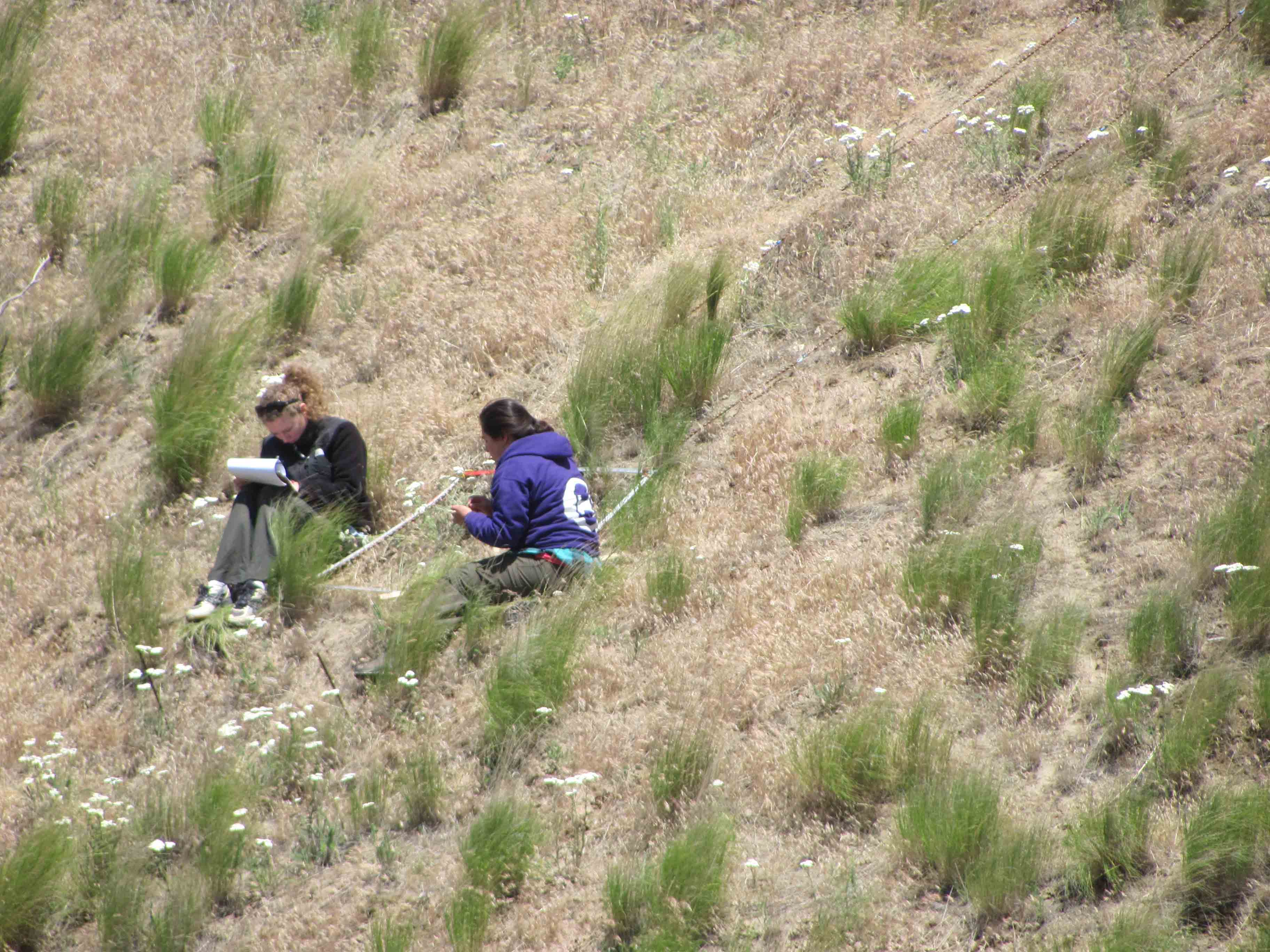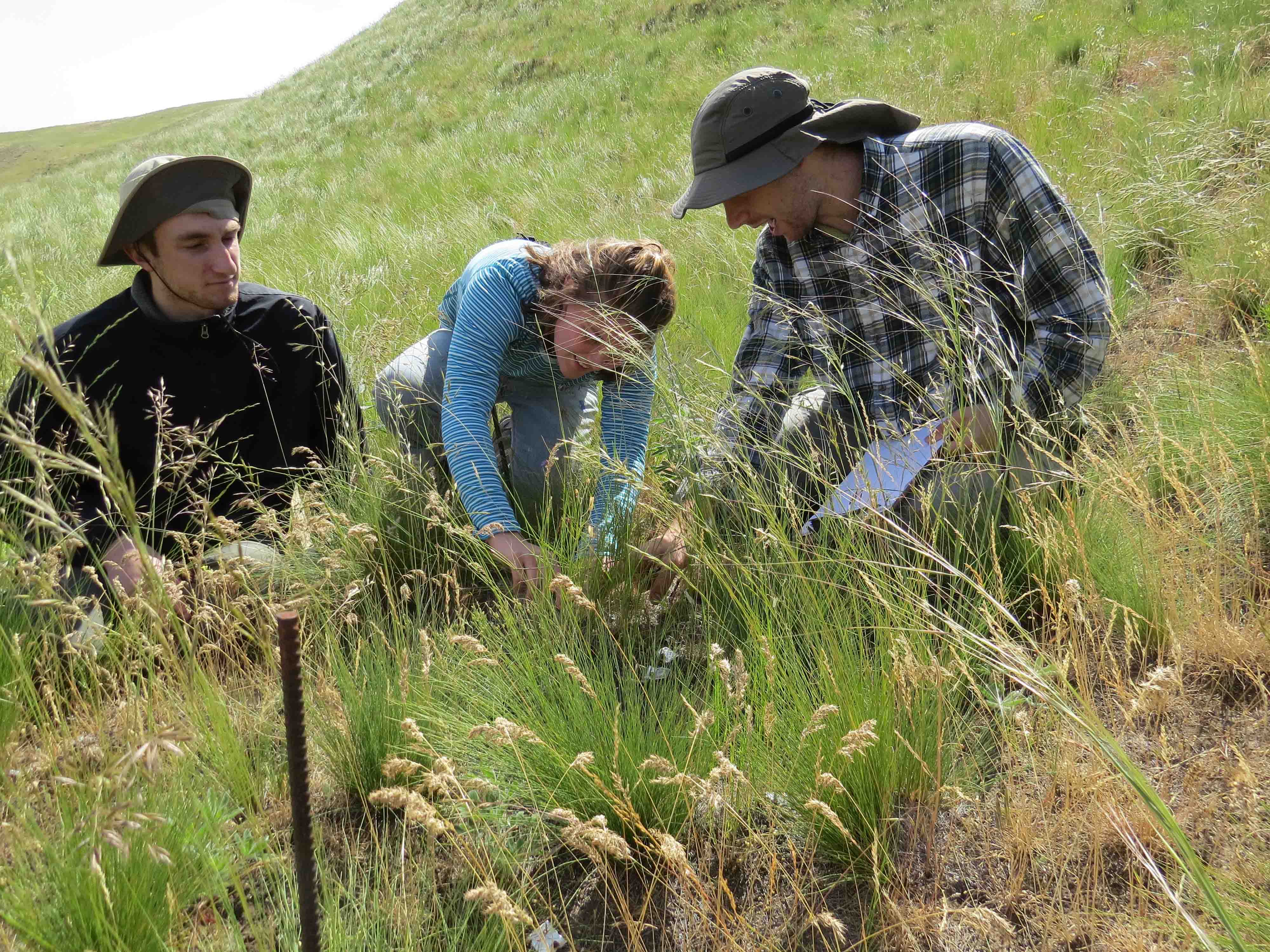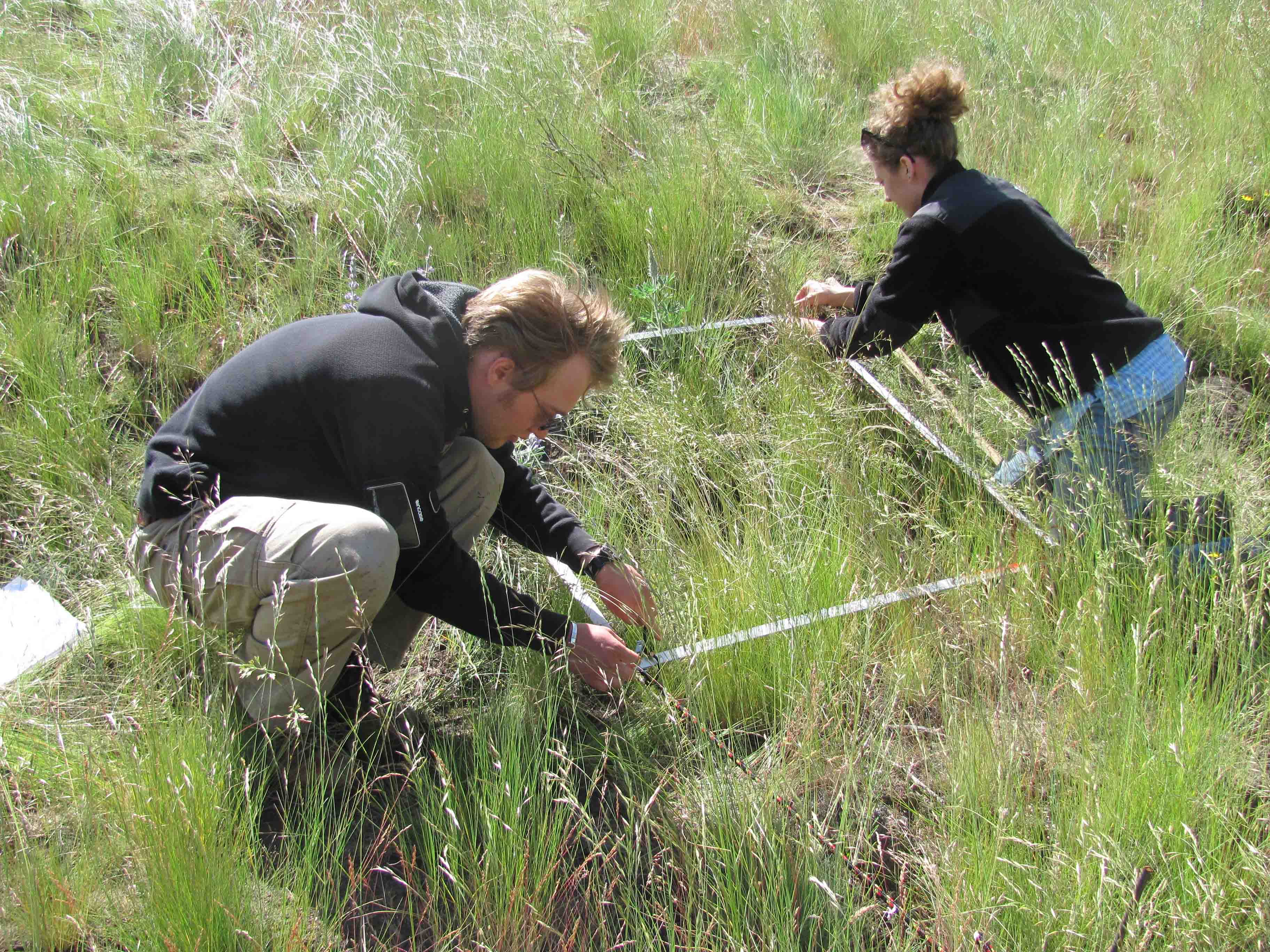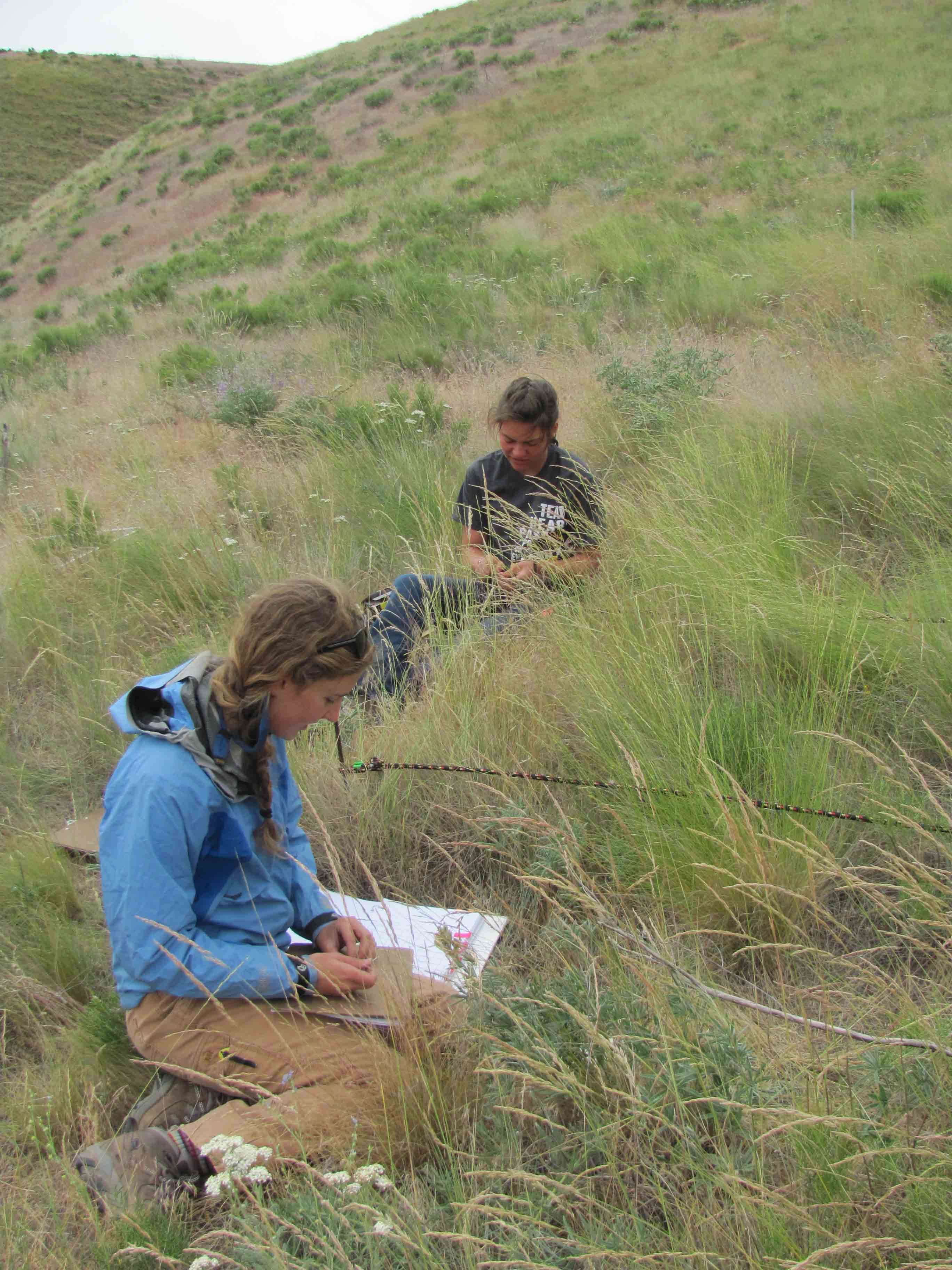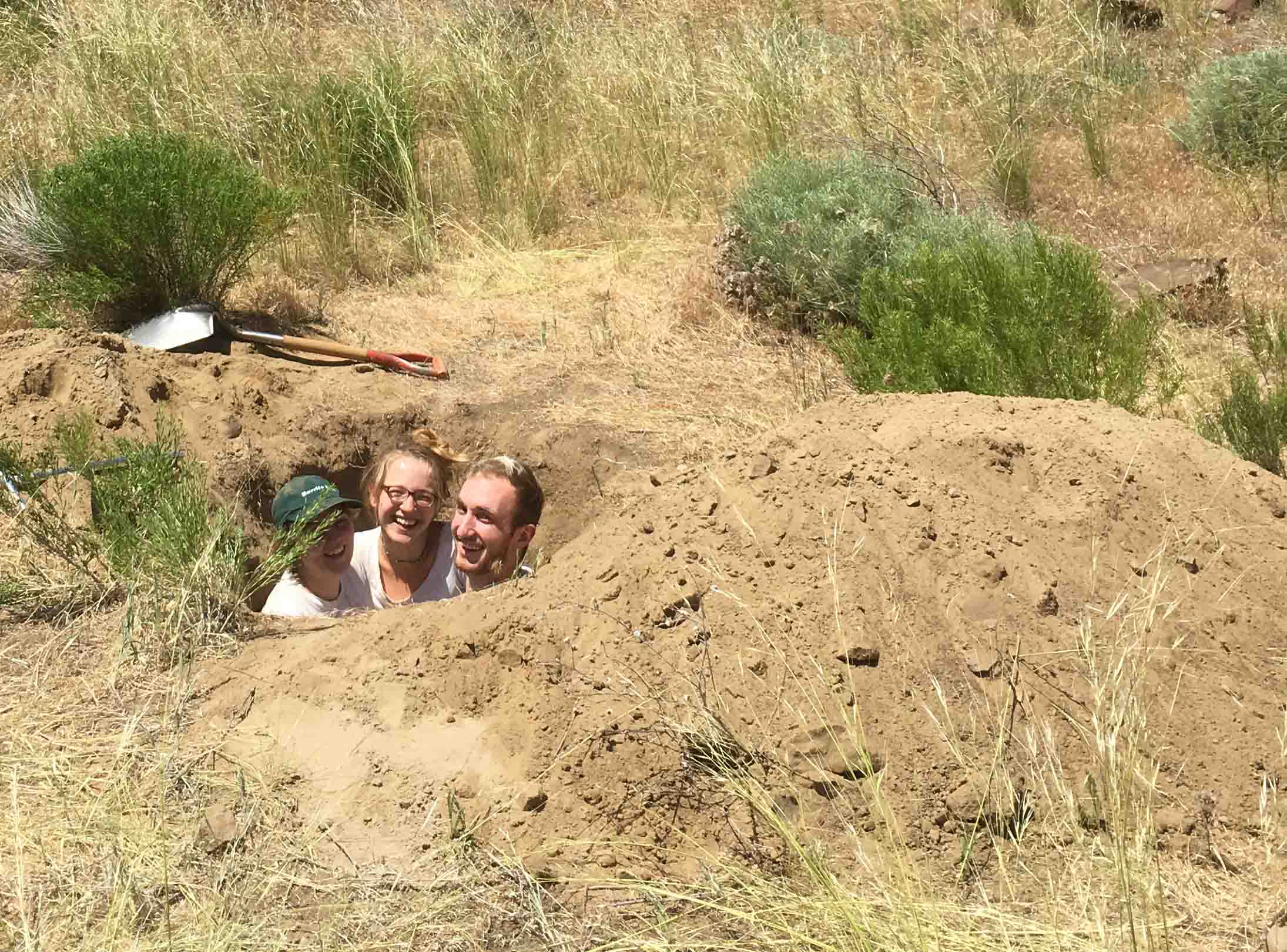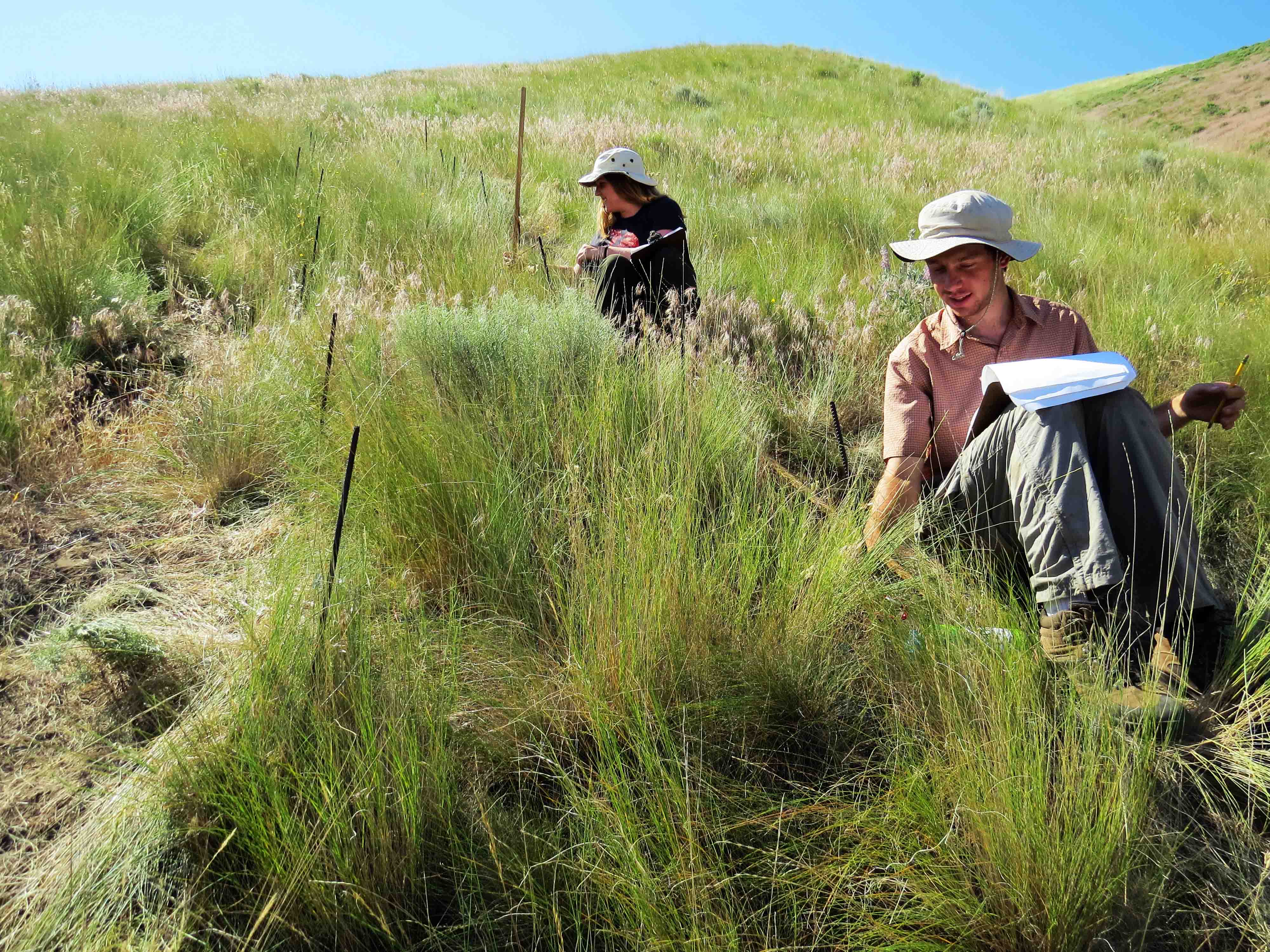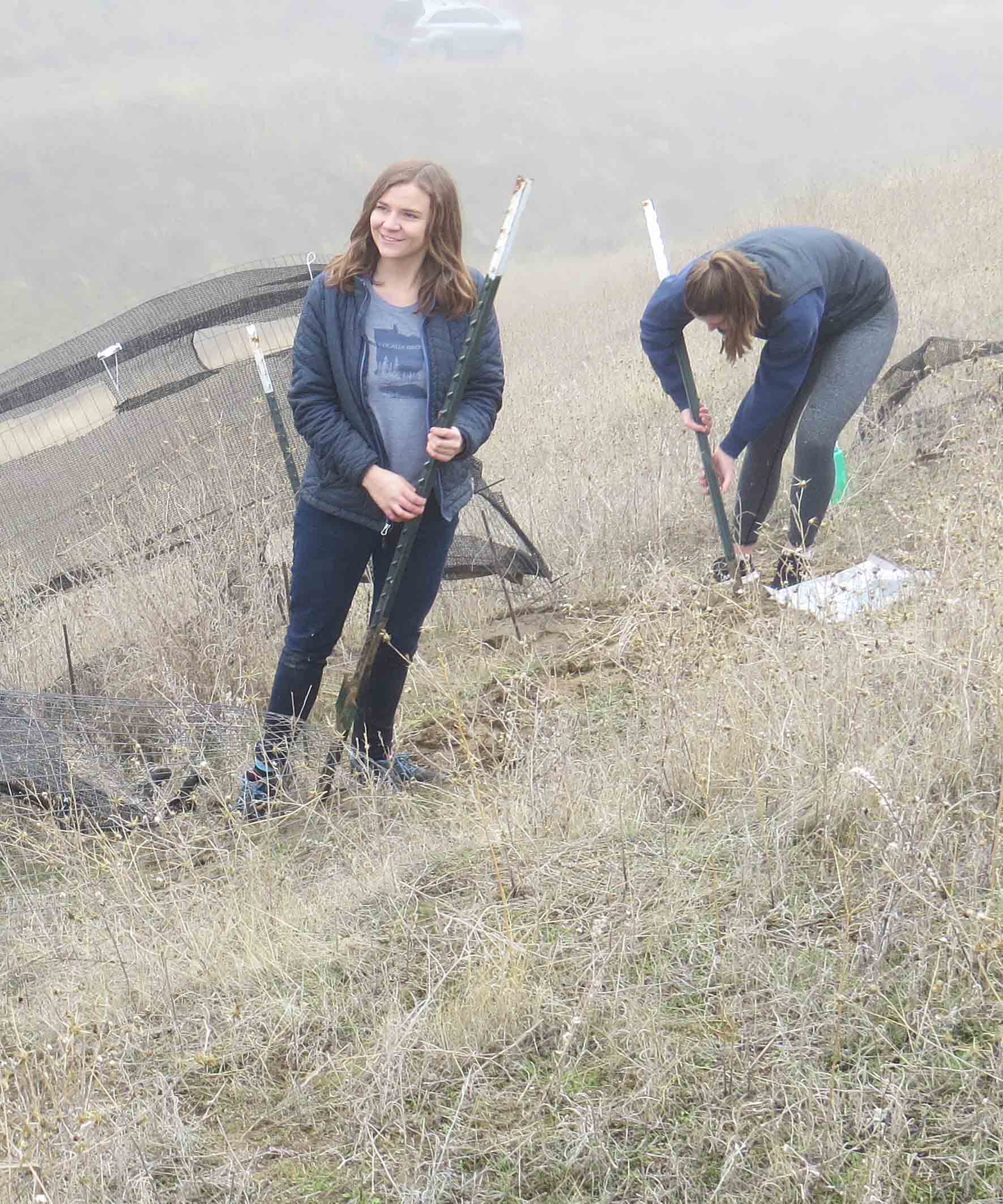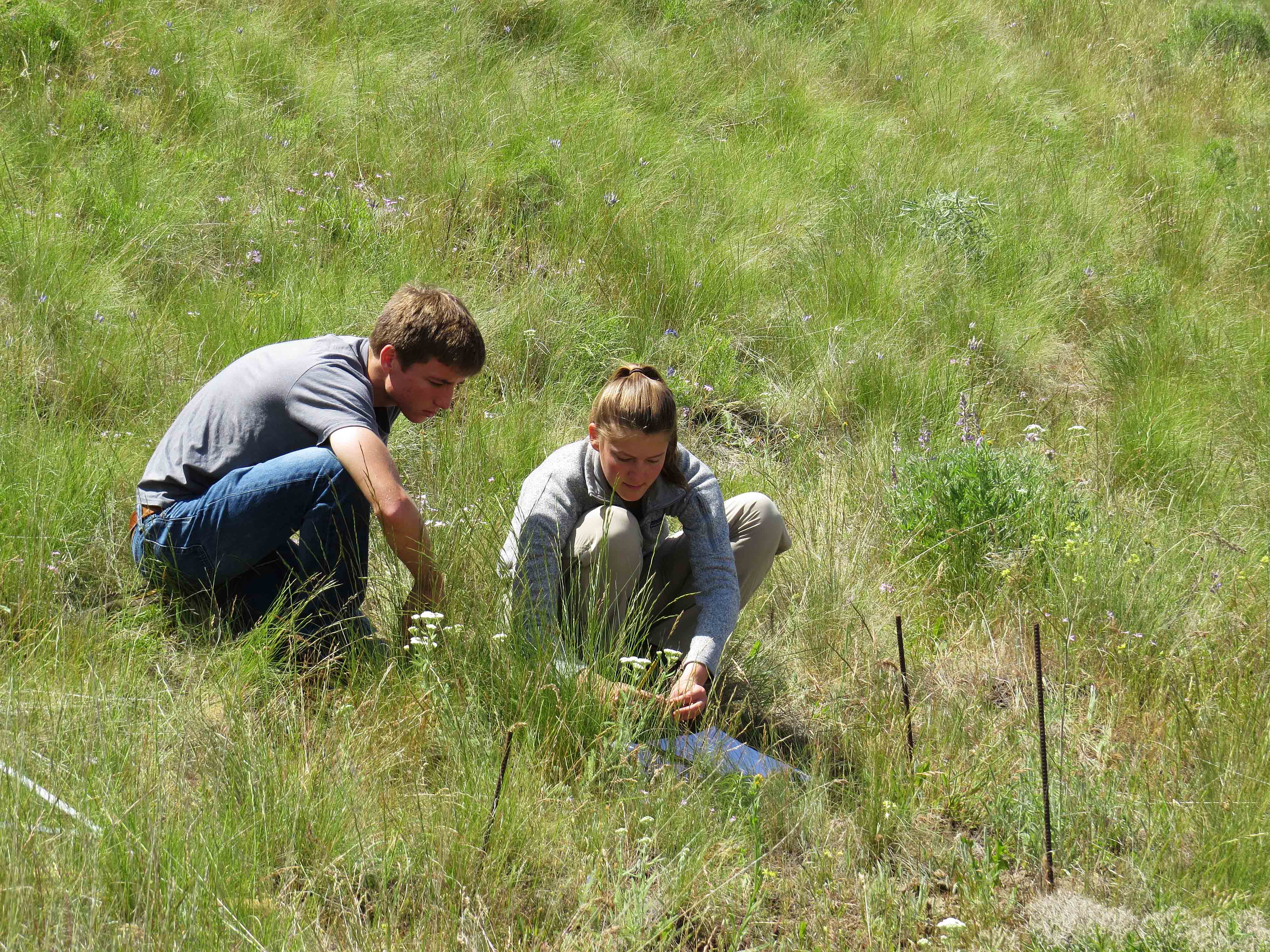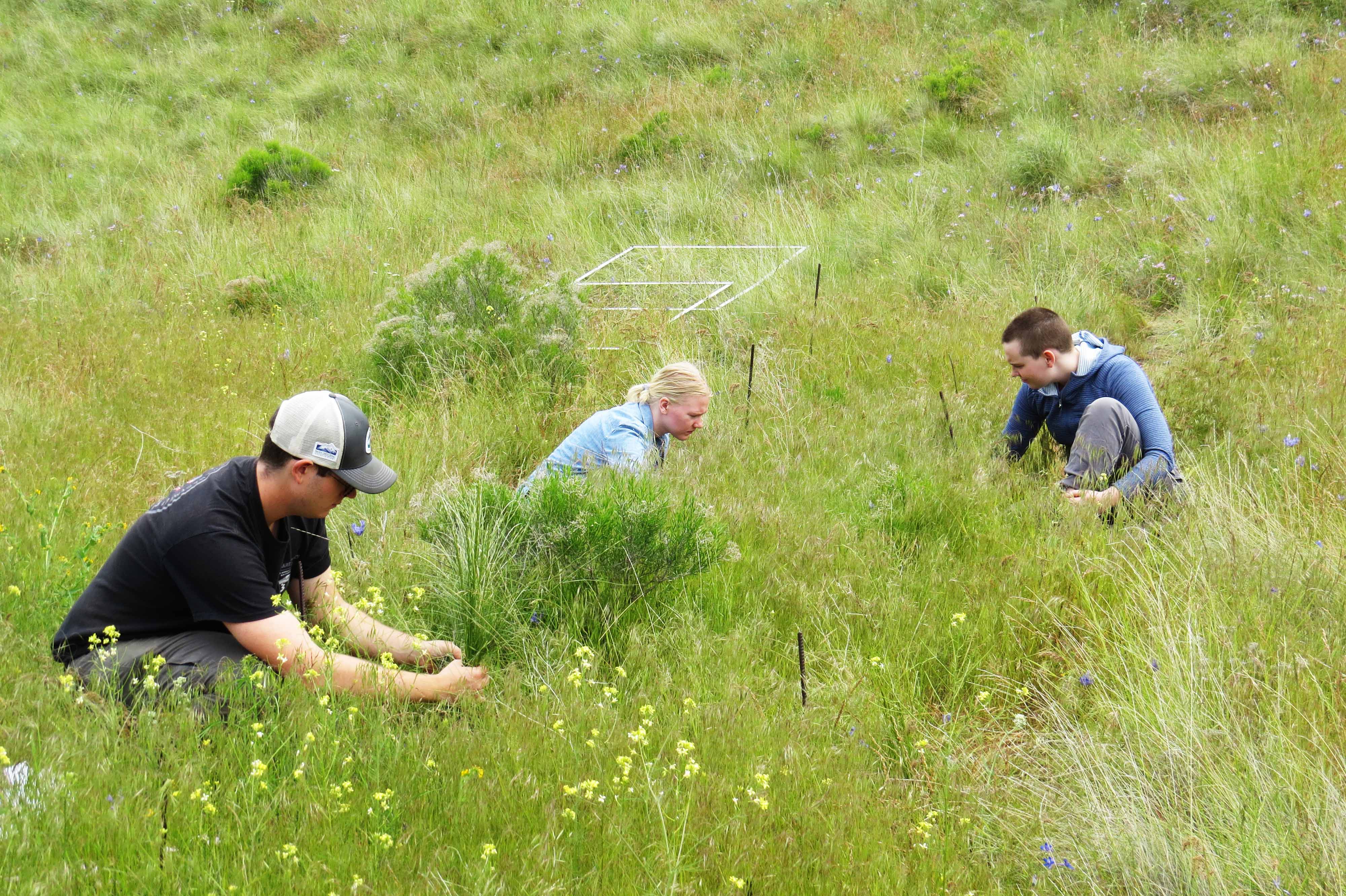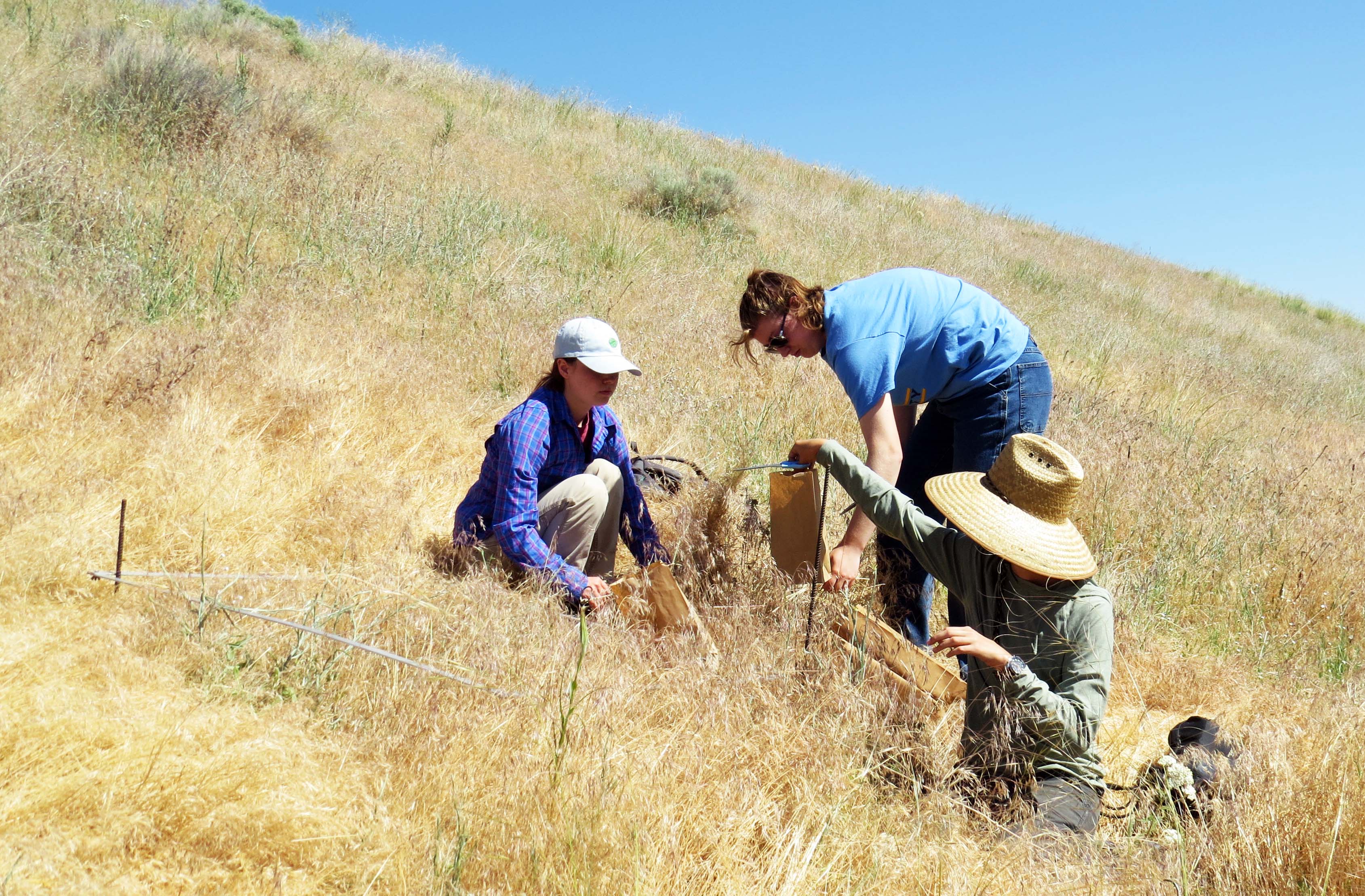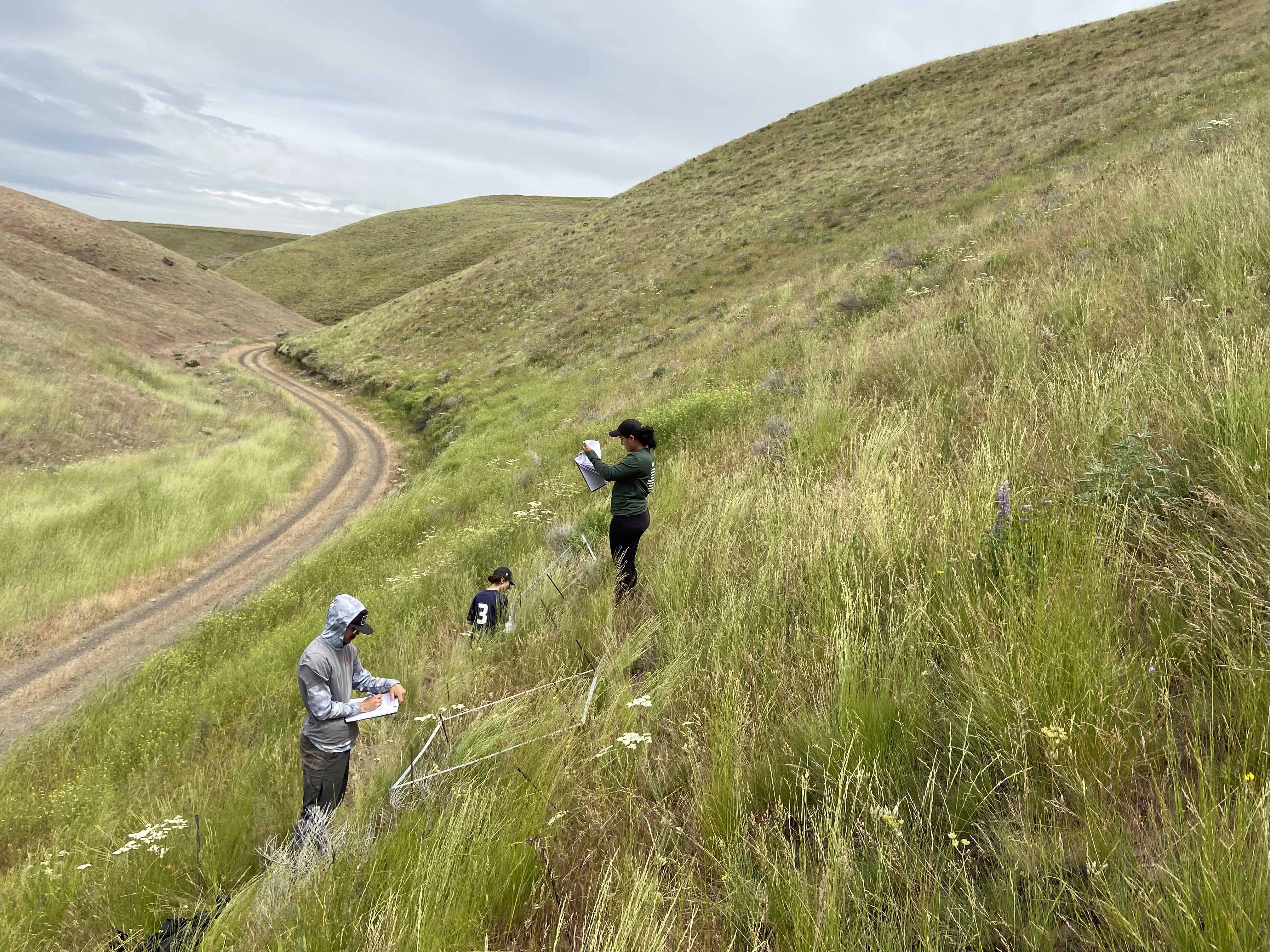*Reliability of inference in ecology, evolutionary biology, and beyond
*Responses to climate and disturbance in a semi-arid grassland
SOME COMPLETED / PAUSED PROJECTS
*Cultural evolution in a landscape context
*Pattern and process in avian sexual selection
*Forest patch area and edge effects on forest songbirds
*Avian brood parasitism and nest abandonment
Refer to my publications page for published results from these and other research projects
Pattern and process in sexual selection in birds
Much of my research has involved the role of sexual dimorphic 'ornaments' in the interactions between individual animals. In particular, most of this work was done in the context of determining whether sexual ornaments are signals of individual condition and how ornaments influence the behaviors of competitors and potential mates.
Some completed projects:
1. With David Ligon, my PhD supervisor at the University of New Mexico, I demonstrated the central role played by social interactions in determining steroid hormone levels and the expression of sexual signals in red junglefowl (Gallus gallus).
2. In collaboration with Dany Garant, I identified and quantified heritability of comb size in red junglefowl and its strong genetic correlation with a body condition index, as predicted by the hypothesis of capture of genetic variance in condition by sexually-selected signals.
3. I demonstrated that female red junglefowl adjust maternal investment in response to experimentally manipulated mate appearance by laying larger clutches of eggs for more attractive males.
4. I found that the area of melanin-pigmented black plumage on the cap of Kentucky Warblers (Oporornis formosus) was greater in older males and in heavier males (controlling for body size), and that males with more black on their caps were more likely to attract a mate.
5. As my portion of a collaborative effort with Simon Griffith and Valerie Olson, I used meta-analysis to demonstrate that melanin-pigmented and carotenoid-pigmented plumage ornaments in birds did not differ in their susceptibility to experimental manipulations of condition. Further I found evidence of a bias against the publication of results that failed to support predictions of condition-dependent signaling.
6. Iain Barr and I, in collaboration with Simon Griffith showed that a number of song variables previously identified as condition signals in the blue tit (Cyanistes caeruleus) do not show consistent relationships to condition across studies, and that the limited set of song variables which may signal condition do so only weakly.
7. My collaborators and I showed that fecundity selection on plumage color in our population of blue tits (Cyanistes caeruleus) was weak and variable. Selection varied as a function of nesting density and oak density, but not in a consistent pattern. Further, selection gradients typically were neither positive nor stabilizing, and were thus counter to prediction.
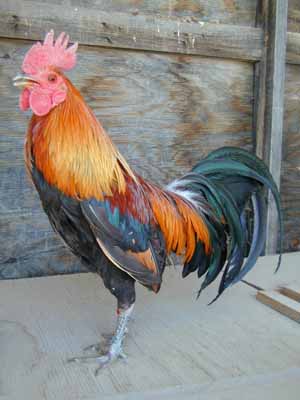
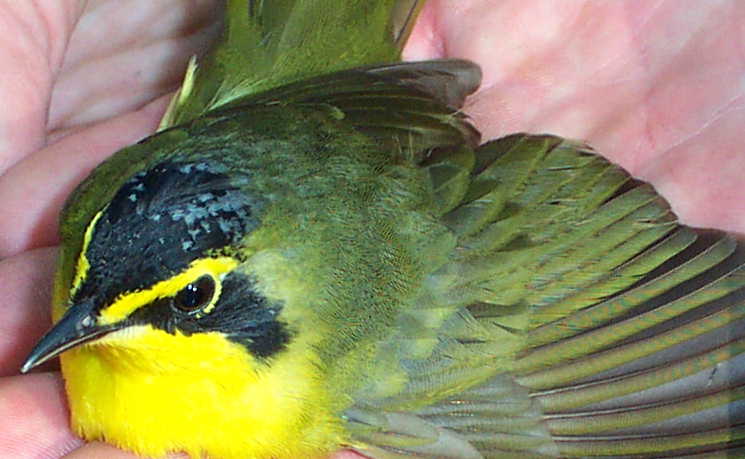
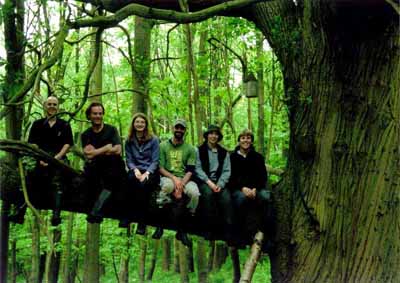
Patch area and edge effects on the occurrence patterns of forest songbirds
In 2002-2003 I worked closely with Brooke Stansberry, an MS student I supervised at Kansas State University, studying forest-nesting, migrant birds. The most important part of this work ended up being a meta-analysis of published studies to determine edge and small-patch avoidance patterns across a large number of migrant forest bird species in Eastern North America. See my publication list for a link to the appendices to our Conservation Biology paper on this topic. A major result included our observations that in forest dominated landscapes, almost no forest-nesting bird species appear to avoid edges, but in landscapes not dominated by forests, many forest-nesting bird species appear to avoid smaller forest patches and/or edges.
Several alternative explanations exist for this result. One hypothesis we proposed is that larger forest patches end up with higher densities of forest birds through the process of conspecific attraction - preferential recruitment into already occupied locations. Since the publication of our paper, empirical support for this mechanism as a link between patch area and bird density has been growing.
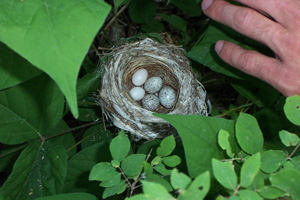
Nest abandonment by Bell's Vireos: an adaptation to brood parastism?
When conducting my MS thesis work I observed that Bell's Vireo (Vireo bellii) frequently abandoned their nests when brood-parasitic Brown-headed Cowbird (Molothrus ater) eggs appeared. If a cowbird hatches in a vireo nest, the cowbird chick usually obtains more or less all the food, and the vireo chicks typically starve to death. Thus I first thought that the vireos were abandoning parasitized nests as an adaptation evolved in response to this strong selection pressure. However, the number of cowbird eggs laid in a nest was not a good predictor of abandonment. Instead, the number of vireo eggs remaining in the nest (cowbirds often remove host eggs) predicted abandonment, suggesting that vireo behavior might best be explained as a response to egg loss. Vireos typically failed to abandon parasitized nests, and thus resigned themselves to tending a doomed nest, unless cowbirds removed a sufficient proportion of the clutch. Because abandonment in response to egg loss is a behavior shared by most bird species, it is likely an ancestral trait in Bell's vireos and not evolved as a unique response to cowbird parasitism.
In 2005-2006 I collaborated with Karl Kosciuch, whose dissertation focused on this system, and Karl's PhD supervisor Brett Sandercock. Karl's large correlative data set supported my original observations, and experiments we designed and implemented in spring 2005 supported the conclusion that Bell's Vireos do not recognize or respond to cowbird eggs, but instead abandon their nests when a sufficient proportion of the clutch is removed by cowbirds. Remarkably, loss of host eggs explained nearly all the variation in abandonment of parasitized nests within and among pairs. This raises the interesting question of why a species that pays such a high cost of being parasitized by cowbirds, and has presumably co-existed with cowbirds for a long time, has not evolved behaviors that would more effectively reduce the costs of cowbird parasitism.
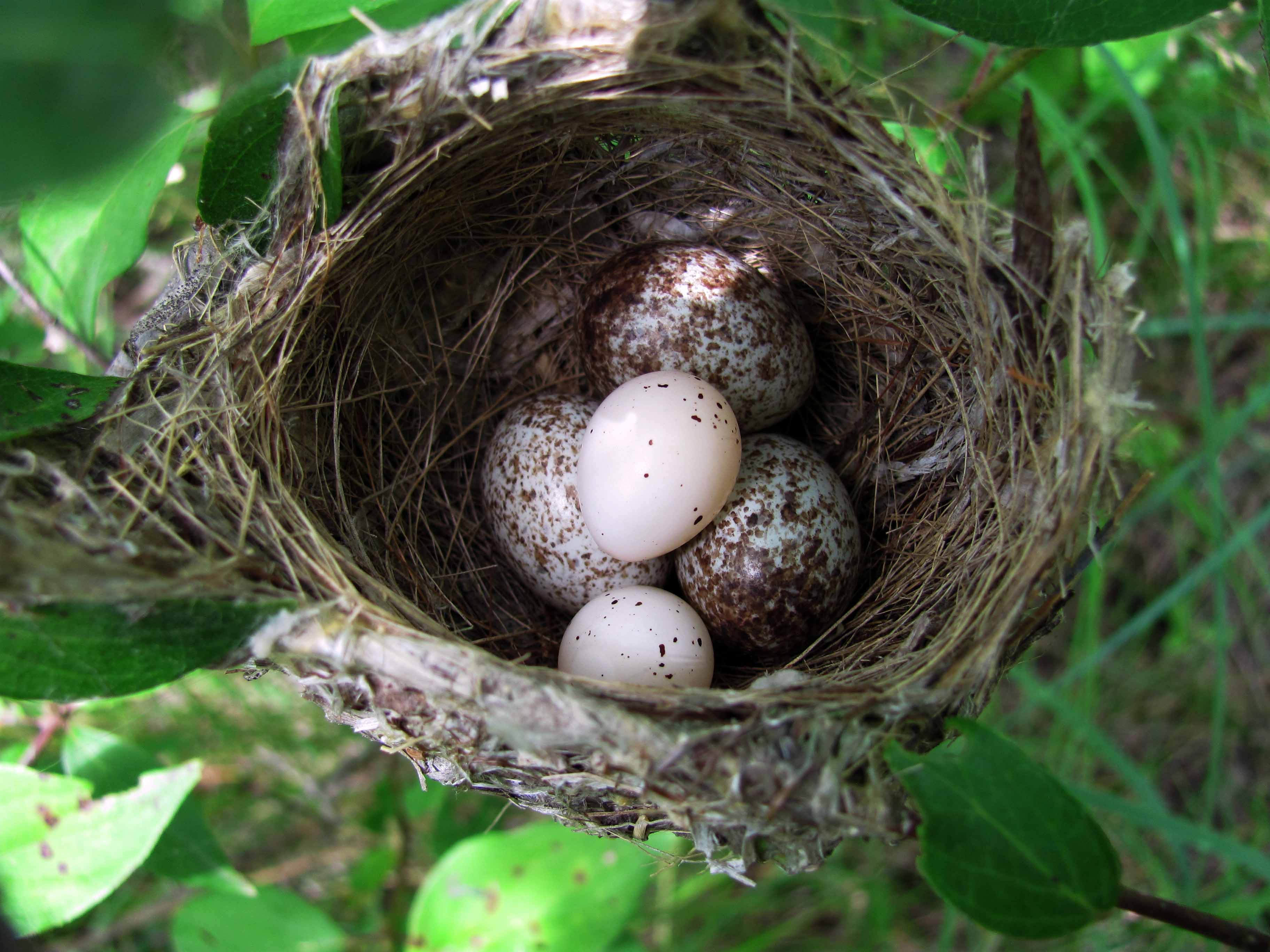
Cultural evolution in a landscape context
-Geographic patterns of song sharing in dickcissels
In many bird species, distinct vocal neighborhoods develop in which neighbors closely resemble each other in song types. We know that social learning coupled with limited dispersal are sufficient to promote the development of this phenomenon, but there has been only limited empirical exploration of the habitat or population processes that lead to the strikingly different patterns and scales of song sharing among, and even within, species.
Since 2005, Bill Jensen and I, along with a series of undergraduate students, have been exploring song sharing in the dickcissel (Spiza americana), a Neotropical migrant songbird and one of the most common grassland birds breeding in the central United States. The students who have worked on this project, Perry Williams, Derek Schook, Anthony Dalisio, Amy Strauss, Cory Castro, Gabriella Sterne, Brian Kearns, Cecily Foo, Kristin Ballinger, Hanna Kahl, Eric Ross, and Marci Parra have all participated through an REU program in the Division of Biology at Kansas State University. Thanks to their hard work, we have started to develop a more sophisticated understanding of geographic variation in dickcissel song. Within an area of continuous habitat (Konza Prairie Biological Station) adjacent dickcissel males sing nearly identical songs, but there is a steady decline in similarity with distance such that males several km apart have many differences in their songs. These differences are both qualitative, in the form of different elements, and quantitative, in the form of changes in note frequency and duration within elements. Furthermore, we found dramatically different patterns of song sharing in different landscapes with different patterns of habitat.
-We have shown that male dickcissels respond equally strongly to playback of foreign and local song, suggesting that dialect conformity does not confer an advantage when defending a territory. In that same study we also found that male dickcissels direct much less aggression towards playback of song from adjacent neighbors than non-neighbor local song or foreign song, demonstrating that male dickcissels can discriminate among songs even from within dialects in which songs vary very little from male to male (Ethology 2017).
-This work also led to a cross-species meta-analaysis in which we synthesized 379 effects from 57 previously published studies to explain variation in the responses of territorial songbirds to playback of local vs. foreign dialects. Among other things, we found evidence that signal recognition declines with evolutionary divergence between populations and we also found strong methodological effects on reported patterns, some of which have important implications across the discipline of animal behavior.
-We recently published a paper in Ornithology (link to open access pre-print) in which we show that within sites, songs changed over time (across years), but that different types of sites seemed to show different rates of song culture change. We recorded songs in two habitat types, croplands and grasslands. In the croplands, males disappeared from territories (due to some unknown combination of emigration and death) at nearly twice the rate as in the grassland sites. As expected, songs produced in croplands changed more over the years than songs produced in grasslands, presumably because of the higher rate of territory turnover.
-We also are hoping to analyze existing data to determine if there is a role for female choice in promoting conformity to the neighborhood dialect.


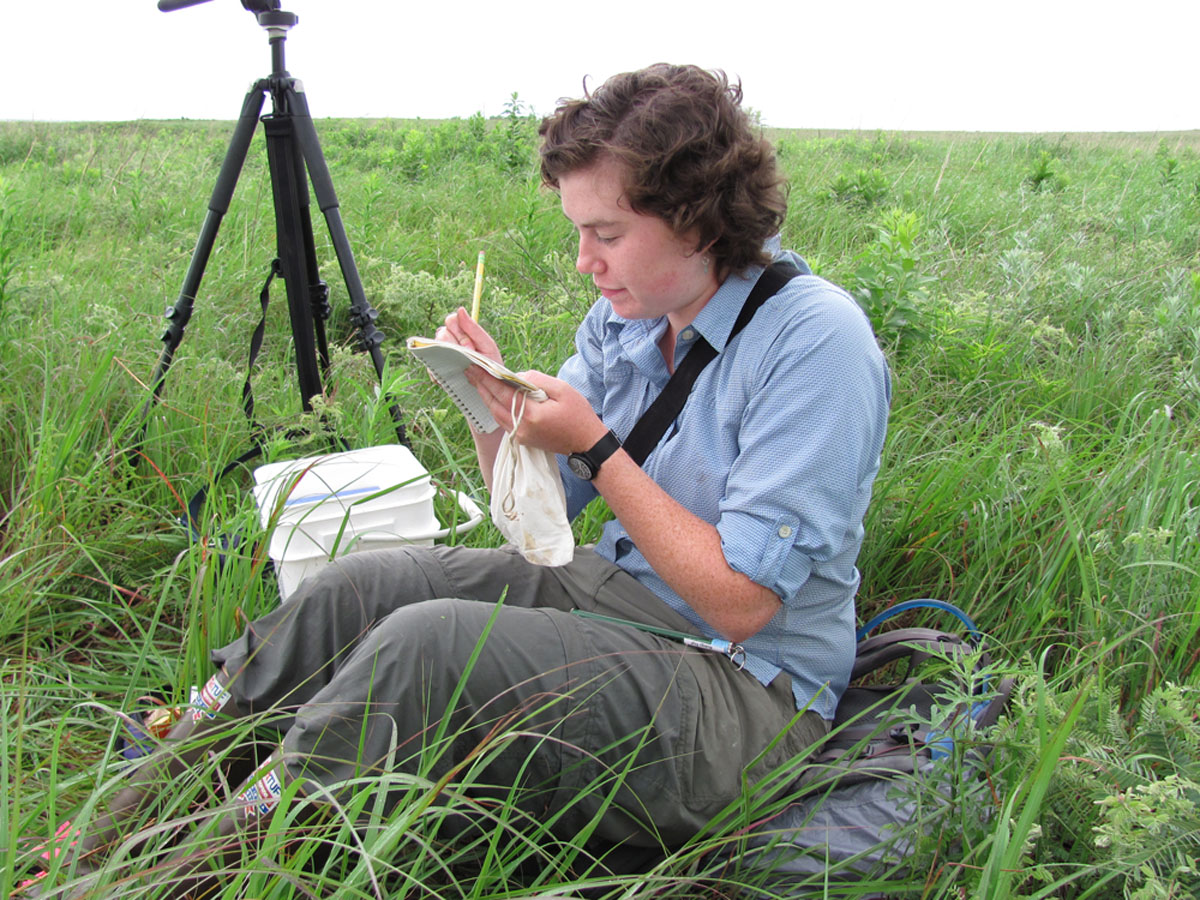
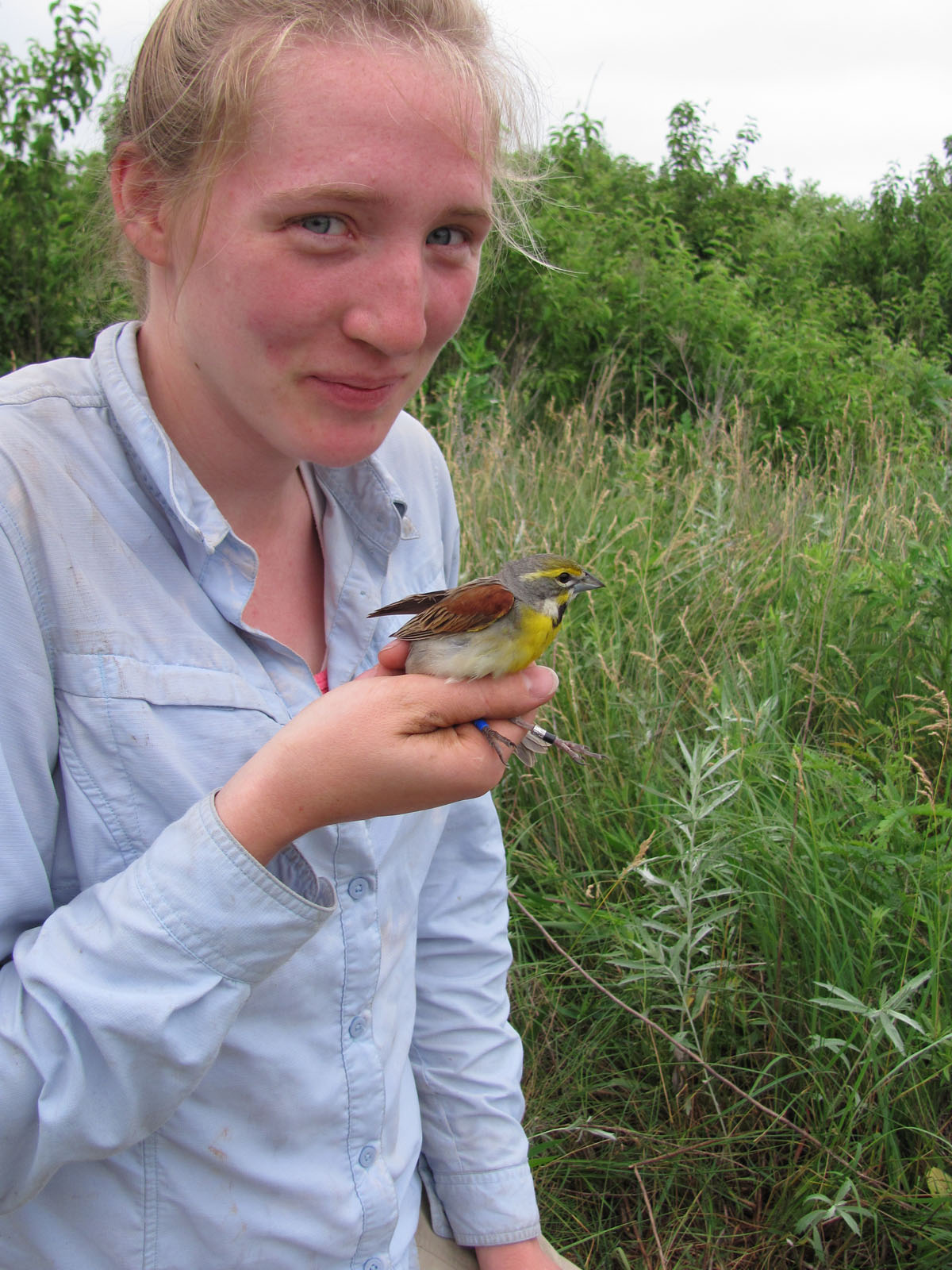
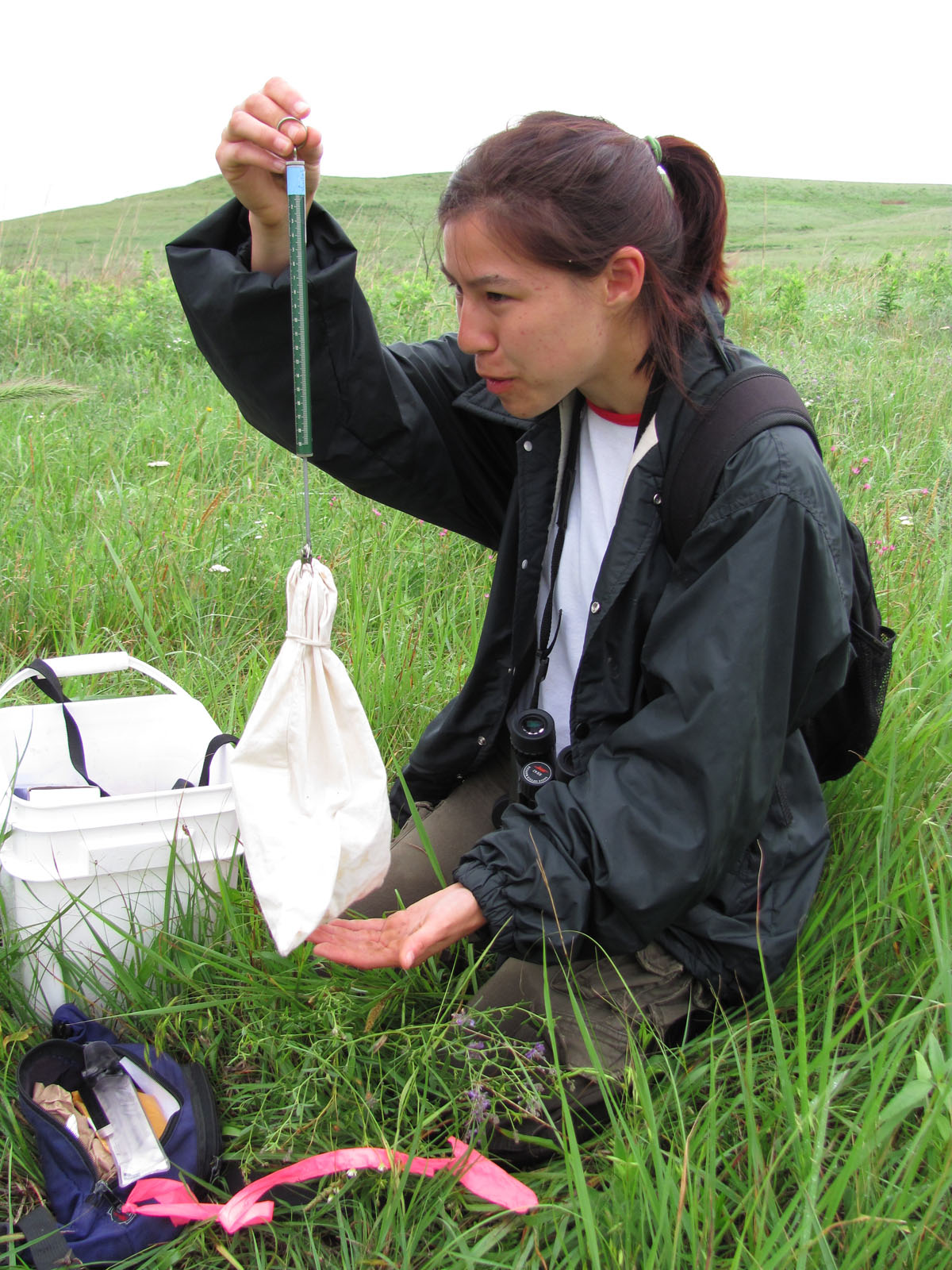
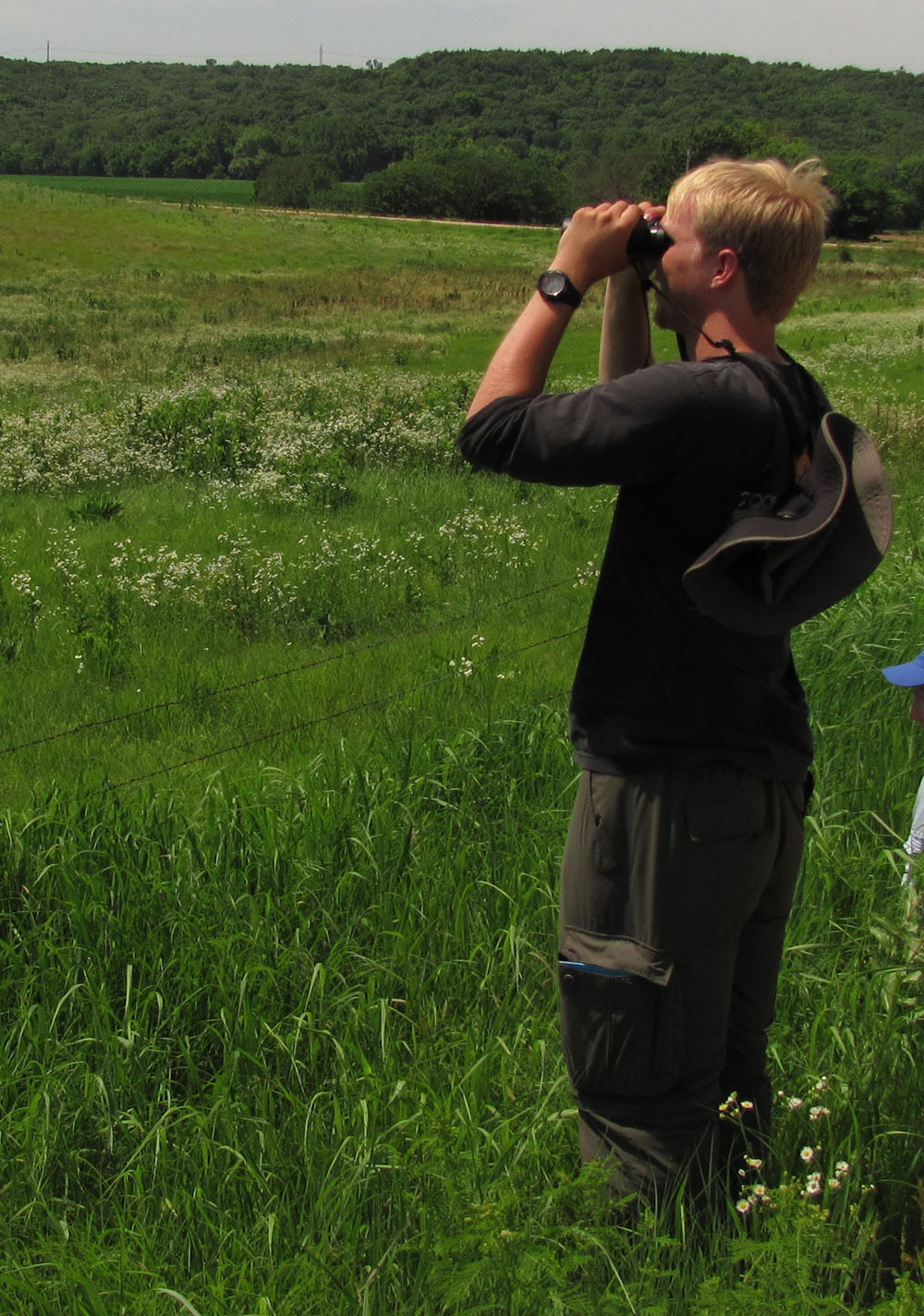
Reliability of inferences in ecology, evolutionary biology, and beyond
Much of my ongoing research is at the intersection of metascience and ecology / evolutionary biology. I'm interested in the reliability of published research in ecology and evolutionary biology and how this reliability might be improved.
I've been interested in this topic for well over a decade now. While examining the extensive literature on sexual selection in blue tits, it seemed to me that published results did not produce a coherent picture of the signaling role of plumage color in this species. I like quantification, so I decided to conduct meta-analyses to see if I could derive robust conclusions from this literature. With >50 papers published containing >1000 statistical effects, there appeared to be ample material for such analyses. Remarkably, the meta-analyses did not strongly support any conclusions beyond the almost trivial observation that male blue tits are more intensely colored than females (Biological Reviews 2013).
So how could we have spent so much time and money studying this species and not have learned more? There's no one answer to this question, but I've identified several issues that appear to plague this body of research and probably hinder progress throughout evolutionary biology and beyond. These problems include insufficient replication and a variety of frequent practices expected to make Type I error (false positives) common.
In my paper based on the blue tit data (Biological Reviews 2013), I reviewed some ideas for increasing the quality of inference and thus the effectiveness of progress in evolutionary biology. Human behavior is influenced by incentives, and the current incentive structures facing evolutionary biologists do not favor decisions that optimize empirical progress. It is within our power as a scientific community to change these incentive structures, for instance by adopting editorial and funding policies that more highly value replication, changing data reporting standards at journals, and developing and promoting hypothesis registries
Since publishing that paper on blue tits, I have taken a deeper dive into metascience by conducting research into processes that may influence the reliability of published research. All of this work has been in collaboration with other researchers, including Shinichi Nakagawa, Fiona Fidler, Hannah Fraser, Elliot Gould, and others. This includes surveys of ecologist and evolutionary biologists that asked them about their practices and opionions (Fraser et al. 2018, Fraser et al. 2020), explorations of the practices of meta-analysts in ecology and evolutionary biology (ODea et al. 2021), and attempts to quantify publication bias in ecology and evolutionary biology (Yang et al. 2023, Parker and Yang 2023). My biggest project in this realm so far is an exploration of the extent to which results can vary due to the different decisions made by data analysts (Gould et al. 2023). This project, which I co-led with Elliot Gould and Hannah Fraser, involved working with hundreds of researchers in ecology and evolutionary biology who either (a) conducted independent analyses of the same biological data to answer the same biological questions or (b) peer reviewed those analyses.
I have also been working with a long list of collaborators to improve reliability of empirical work in evolutionary biology and ecology through holding workshops, developing guidelines for authors, reviewers, and journals (e.g., TTEE and Parker et al. 2018), publishing reviews, recommendations, and opinion pieces (e.g., Parker and Nakagawa 2014, Nakagawa and Parker 2015, Parker and Nakagwa 2017, Parker et al. 2018), and working with journal editors on improving policy. Much of my work in this area is now directed through SORTEE (Society for Open, Reliable, and Transparent Ecology and Evolutionary biology).
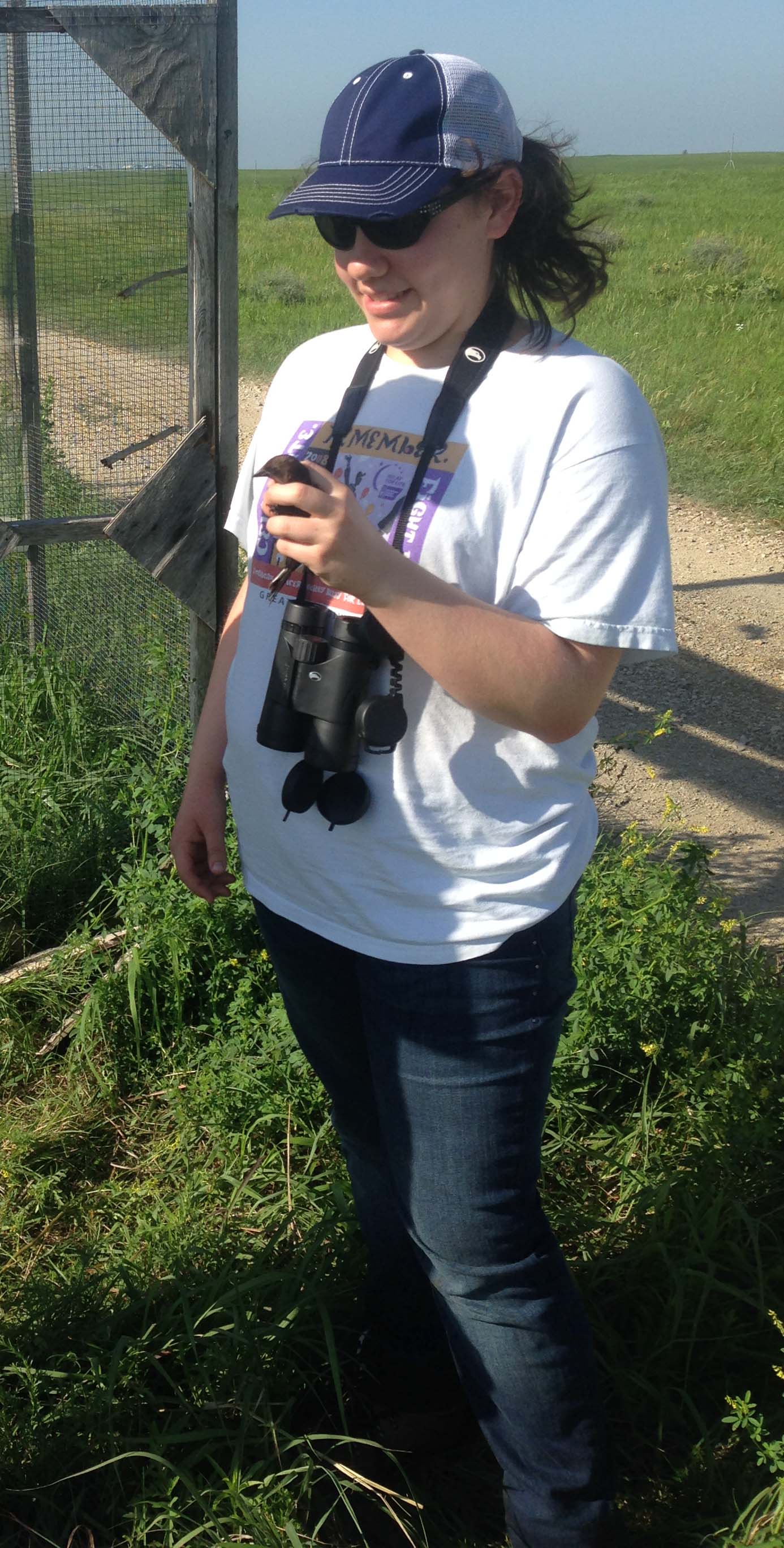
Responses to climate and disturbance in a semi-arid grassland
Environments around the world are changing rapidly in response to direct human disturbance and the indirect human effects of climate change. These changes are stark in the semi-arid grasslands of North America, where rapidly declining perennial grass populations are being replaced by annual invasive weeds such as yellow star-thistle.
My students and I have been working at the Wallula Gap Biological Station to understand the effects of climate and disturbance on the various semi-arid grasslands there. Much of this work has focussed on bluebunch wheatgrass (Pseudoroegneria spicata), a common perennial bunchgrass that has declined dramatically in the Columbia Basin in the past 150 years, and plant community change more generally. This work is multi-faceted and includes:
-tracking individual bluebunch plants in long-term plots on north and south-facing slopes with different levels of insolation, temperature, and evaporation. In collaboration with Bob Shriver, we recently produced models demonstrating striking differences in demographic rates between these slopes thereby helping us understand the small-scale variability evident in the bluebunch wheatgrass population and to forecast responses of this species to future climate warming. This work demonstrates the importance of climate to plant demography, shows that demographic rates can differ over small spatial scales, and calls attention to the importance of establishment in determining population trends in perennial plants in semi-arid environments. This work was recently published at Ecosphere.
-experimentally manipulating insolation and monitoring effects on bluebunch seedling establishment as part of our exploration of the role of seedling establishment as driving major demographic responses to climate. The first paper from these experiments is now published at Rangeland Ecology and Management.
-tracking plant community responses to experimental disturbance. In 2020 we expanded this project to join the international distributed experiment known as DRAGNet
-monitoring areas of transition between perennial bunchgrass-dominated communities and annual grass-dominated communities
-and various other related projects

